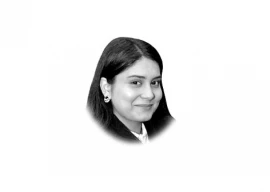
Today we are the sixth largest country in terms of population. And yet, if compared to the first five, we barely have the resources or the economy to support such a large number of people – and that is possibly why we see the breakdown of social fabric in parts of the country.
There was a time we were told that it was East Pakistan that was to blame and it was that part where the population was out of control. And yet Bangladesh has been successful in controlling its growth – while we continue to ignore the problem, hoping it will go away.
According to UN estimates, the current population of Pakistan in July 2017 was 196,779,598. But this is an approximate number. Some say that we crossed the 200-million-mark some years back – hence the increased pressure on resources like water, produce and power.
The only silver lining – if it can be called that – is that once the country’s census figures are released, we will get a more accurate count. We have been consistent in trying to identify our problems. Our previous national population census was held in 1998, after being delayed for seven years. Now, after 19 years, we held our sixth census.
Maybe it is because a new census would initiate a reorganisation of electoral constituencies, the redistribution of wealth among the provinces, districts and cities, as well as greater autonomy for the politically marginalised ethnic communities. Also, the 2017 census will shed light on the state of religious and ethnic minorities that have faced discrimination from the government for the past few decades.
While Bangladesh and India have held regular censuses every ten years for many decades, Pakistan’s failure, or a lack of will to do the same, has pushed us into successive administrative crises.
We should be ready for many surprises. One prediction is that in about 10 years, nearly half of Pakistan’s 188 million people are set to live in cities, compared to only a third today. This means an increase in pressure on an already limited infrastructure. The two cities expected to face the biggest brunt are Karachi and Peshawar.
Experts believe that urbanisation is posing a great challenge. According to the 1998 census, the majority of people in Pakistan lived in the countryside, with only one-third of the country’s estimated 188 million inhabitants currently residing in cities.
A major concern about the 2017 census raised by Sindh, Balochistan and Khyber-Pakhtunkhwa is related to internal migration. It is unclear how the government aims to tackle the issue of internally displaced tribal people. Many of those migrating to cities from rural areas are those displaced by fighting and military offensives in the tribal areas. We have not been able to count them.
Coming back to our population explosion, it is hard to imagine how Pakistan can address its development challenges from education to electricity generation, as well as solve its numerous political conflicts and militancy, if it continues to pay scant attention to the crucial issue of population growth.
Based on UN estimates, Pakistan’ population is equivalent to 2.62% of the total world population and Pakistan ranks number 6 in the list of countries (and dependencies) by population. In other words, we are the sixth largest country in the world in terms of population. Of this figure, almost 70 million people are under 15 years old.
The population density in Pakistan is 255 per square kilometre (661 people per square mile). Some 39.2 % of the population is urban (77,107,125 people in 2017). The median age in Pakistan is 22.7 years.
We have to deal with huge population increases, whereas water resources and housing are already hard pressed. The working age population will increase by 70 million in the next 20 years, which seems almost unmanageable for the authorities.
The 2017 census can at least provide the necessary statistics with which the authorities can begin to address these problems. But the clash of political interests among provinces and different ethnicities, as well as the corruption in government departments and ministries would hardly allow a fair population census in the country.
Published in The Express Tribune, July 10th, 2017.
Like Opinion & Editorial on Facebook, follow @ETOpEd on Twitter to receive all updates on all our daily pieces.













COMMENTS
Comments are moderated and generally will be posted if they are on-topic and not abusive.
For more information, please see our Comments FAQ